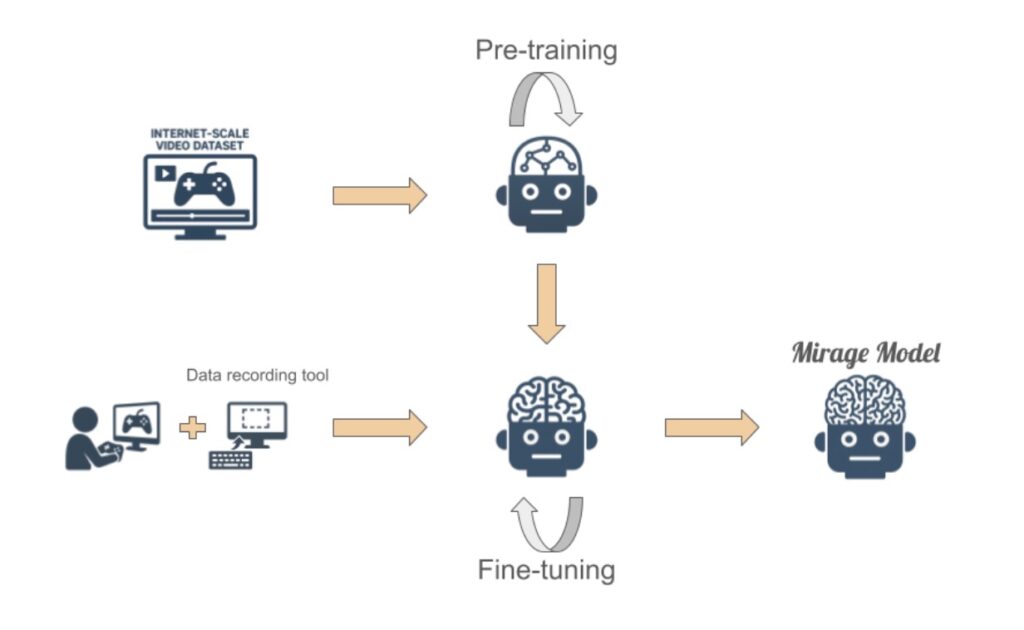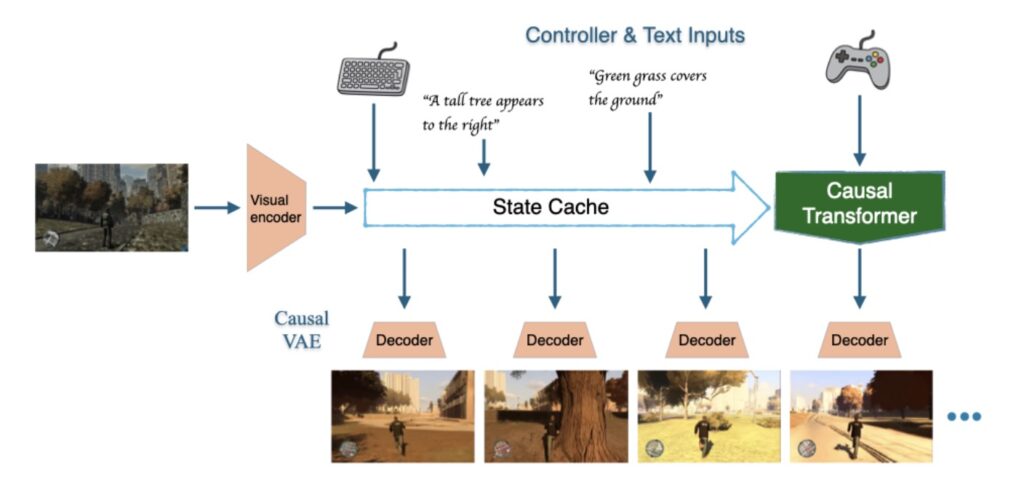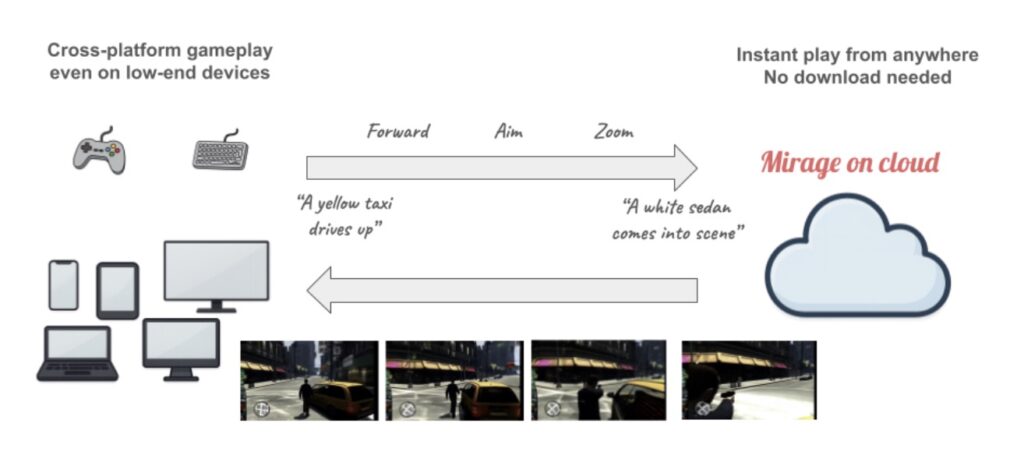Step into a World Where You Create, Play, and Reshape Games on the Fly
- Mirage is the world’s first real-time generative engine for live user-generated content (UGC) gameplay, allowing players to create and modify entire game worlds instantly using natural language, keyboard, or controller inputs.
- Powered by cutting-edge AI World Models, Mirage delivers photorealistic visuals and extended interactive experiences, outpacing earlier systems like AI Doom and AI Minecraft with dynamic, unscripted simulations.
- With playable demos like Urban Chaos (GTA-style) and Coastal Drift (Forza Horizon-style), Mirage showcases a future of infinite replayability and personalized gaming, accessible anywhere via cloud streaming.

Mirage, the pioneering real-time generative engine, is here to transform how we play, create, and experience games. Unlike traditional titles with fixed levels and scripted missions, Mirage empowers anyone—gamer, dreamer, or creator—to imagine and generate entire worlds live during gameplay. Whether you’re escaping through a newly spawned alley in a gritty urban sprawl or expanding a coastal horizon with a single text prompt, Mirage responds instantly, crafting dynamic simulations shaped by your input. Today, with the release of two fully generative demos, Urban Chaos (a GTA-style adventure) and Coastal Drift (a Forza Horizon-inspired ride), we’re inviting you to step into a living, breathing game world that evolves with every decision you make.
What sets Mirage apart in the rapidly evolving landscape of AI-driven gaming? Compared to recent innovations like Google’s AI Doom, Decart’s AI Minecraft, and Microsoft’s AI Quake II, Mirage pushes the envelope with distinct advantages. It’s not just about generating content—it’s about enabling user-generated content (UGC) at any moment through intuitive text inputs, delivering photorealistic visuals that move beyond pixelated or blocky aesthetics, and sustaining interactive gameplay sequences that stretch well beyond ten minutes. While the technology isn’t flawless, as you might notice in the demos, Mirage represents a bold leap toward a future where gaming isn’t just played but co-created in real time. This is UGC 2.0, a paradigm shift where anyone can craft their own games from a simple prompt, reshape worlds as they play, and experience something truly unique every time.

At the heart of Mirage lies a technological marvel: a next-gen AI framework built on World Model research. This system, driven by a large-scale, transformer-based autoregressive diffusion model, is designed to generate high-fidelity, controllable video game sequences. The foundation starts with an expansive dataset of diverse game content scraped from across the internet, paired with a specialized data recording tool that captures intricate, human-recorded gameplay interactions. This rich blend of data is funneled into a vertical training pipeline tailored specifically for games, enabling the model to internalize complex game rules, player behaviors, and interactive dynamics. The result? A generative engine that doesn’t just mimic pre-authored content but creates coherent, realistic worlds on the fly, breaking free from the constraints of traditional game design.
Mirage’s real-time interaction is where the magic truly comes alive. With frame-level prompt processing, players can input commands—whether through text, keyboard, or controller—and see the game world adapt instantly. Imagine typing “add a getaway car” during a high-stakes chase in Urban Chaos, and watching a vehicle materialize seamlessly into the simulation. This dynamic input system, supported by ultra-low latency and a full-duplex communication pipeline, ensures that visual updates stream back to your browser without lag, creating a fluid, immersive experience. Underpinning this is a customized causal Transformer model, enhanced with specialized visual encoders, revised positional encoding, and a structure optimized for extended sequences. By blending techniques from large language models (LLMs) and diffusion models, and applying an advanced distillation strategy, Mirage balances speed and quality, while a long-context window with KV caching maintains visual consistency as the world evolves.

The capabilities of Mirage are as exciting as they are groundbreaking. Running at 16 FPS in Standard Definition, it offers real-time interaction that feels responsive and engaging. Players can alter environments using natural language commands, enjoy minutes-long gameplay with consistent visuals, and access it all via cloud streaming—no downloads required. Every playthrough promises infinite replayability, with multimodal control options that accept text, keys, and controllers. Whether you’re on a laptop or a mobile device, Mirage brings cross-platform gameplay to life, ensuring that wherever you are, a unique gaming experience is just a prompt away.

Behind this innovation stands a world-class team of AI researchers, engineers, and designers, drawing expertise from industry giants like Google, Nvidia, Amazon, SEGA, Apple, and Microsoft, as well as academic powerhouses like Carnegie Mellon University and UC San Diego. Their collective vision is to push the boundaries of generative world models, and Mirage is only the beginning. Looking ahead, generative play isn’t just a feature—it’s a new medium. For creative platforms, it means immediate, personalized content loops; for entertainment ecosystems, it offers infinitely replayable formats; and for communities, it lowers the barrier to game creation to a single idea. Mirage points to a future where games aren’t downloaded or designed—they’re imagined, prompted, and lived. So, are you ready to step into a world of your own making? Dive into Urban Chaos or Coastal Drift today, and let’s shape the future of gaming together.

